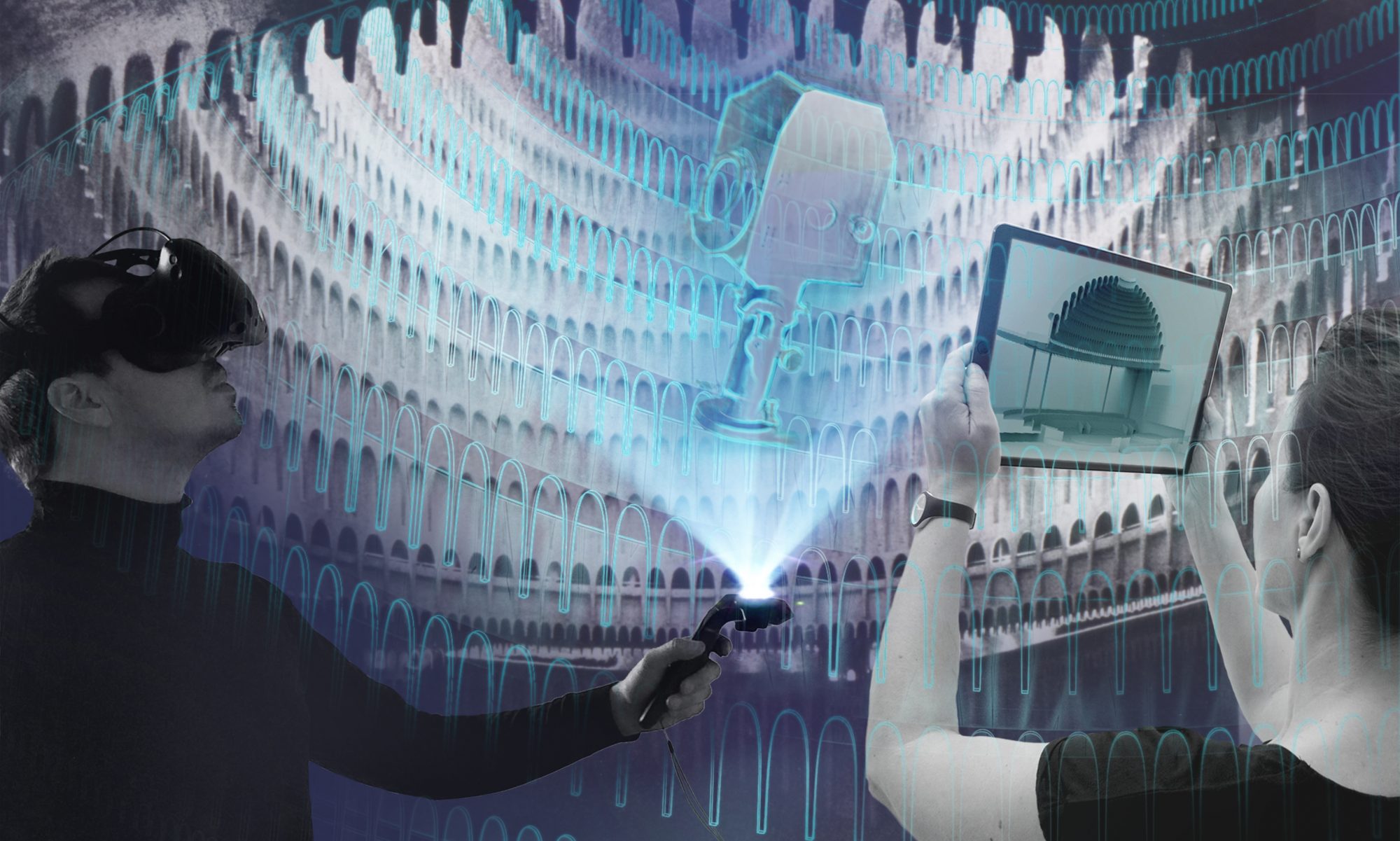The research project “Im/material Theatre Spaces – Augmented and Virtual Reality for Theatre” has been successfully completed after 2.5 years. This publication summarises the findings of the project and provides insights into the interdisciplinary, practice-oriented research work. Download publication (pdf 8 MB)
From 1 October 2019 to 31 March 2022, the six-member digital.DTHG team led by Franziska Ritter and Pablo Dornhege worked out answers to the question of how theatre can be thought together with virtual and augmented reality. The final publication, which has now been published, presents the results and the prototypical sample solutions; with interview partners, we look at the current digital working reality in theatre and point to future solution paths. This publication is intended to provide suggestions and impulses for one’s own creative work as well as to sharpen the view for a more conscious use of immersive technologies:
Download publication (pdf 28 MB)
Download publication screen version (pdf 8 MB)
Wesko Rohde, Chairman of the Board DTHG and Managing Director DTHG e.V., sums up:
“The motivation for the research project “Im/material Theatre Spaces” is to bundle the most innovative forces, to research, to gain knowledge, to make it known and to communicate it to a broad audience. At the same time, the digital.DTHG was founded from this project impulse as a competence area for digitality and new technologies. What this force achieves can be read impressively in this publication. It is not only a description of the completed project, but a compendium, a basic work for subsequent projects and an invitation to continue and to act”.
Together with cooperation partners from the theatre landscape, the research project – funded by the Federal Commissioner for Culture and the Media – investigated the following questions, among others: How can an augmented reality application be used to discuss the future renovation process of a theatre building with the public in a transparent and participatory way? Can digital technologies be used to improve compliance with safety-related industry standards? How can im/material cultural heritage be made accessible to a broad audience? What narrative possibilities arise on the virtual stage? Can stage sets be designed virtually and can new digital design methods be established in mainstream theatre operations? What conditions must be created at the theatres in order to be able to use these technologies in the often hectic everyday work and production stress?
In various sub-projects, scenarios for the use of new technologies and augmented realities in theatres and event venues were conceived and tested. The focus was on three specific theatre topics: architecture, stage design and theatre technology, for which sustainable transferable sample solutions were developed in various sub-projects: “Augmented reality as a communication tool“, “Augmented reality in event technology“, “Virtual Training Tools“, “Virtual Bauprobe“, “Bringing theatre heritage to Life“, “CANON theatre technology history” and “Hybrid real stage spaces“.
The two project leaders and representatives for digitality and new technologies Franziska Ritter and Pablo Dornhege summarise:
“In this research project we have “augmented” the potential of new technologies with the centuries-old “theatre knowledge” and in this interplay we have explored the new possibilities and narrative forms of immersive technologies. This publication is intended to help those who are dealing with issues of digitality in theatre, as well as to provide suggestions and impulses for their own creative work. Our prototypical solutions are intended to sharpen the view for a more conscious use of immersive technologies.”
This final report documents the project results and findings, provides insight into the working methods and shows possibilities for sustainable transferability.
Download publication (pdf 28 MB)
Download publication screen version (pdf 8 MB)



